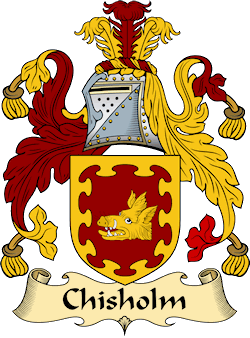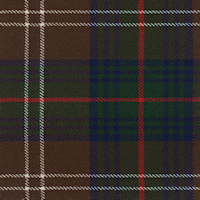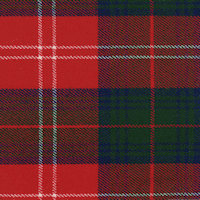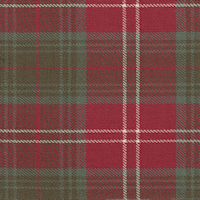Chisholm

Purchase Heraldry Products
Download Now!

Surname: Chisholm
Branch: Chisholm
Origins: Scottish
More Info: Scotland
|
|
Background: It is said that the name is Norman and is first recorded in the barony of Chieseholme in Roxburghshire. The head of the Chisholm clan is called "The Chisholm". This line survived as Scott-Chisholme, until the end of the 19th century, when the last Border chief, Colonel John Chisholm, was killed in a charge at Elandslaagte in South Africa.
The family moved north from the Borders, and by 1339 Sir Robert de Chisholme was Constable of Urquhart Castle on Loch Ness. His grandson Thomas, became the first Chisholm chief of the clan, which had the lands of Strathglass and Glen Cannich for the next four centuries.
In 1887, Roderick, the chief, died without an heir and after the estates had passed through the female line, they were eventually sold.
The clan headquarters are at Cnoc-an-Fhurain, Barcaldine, Argyllshire. The current chief of the Chisholm clan lives in Bury St Edmunds in Suffolk.
|
 Motto: Motto: Feros ferio, I am fierce with the fierce. Arms: Gules, a boar's head couped Or, langued Azure. Crest: A dexter hand holding a dagger erect Proper, the point therof transfixing a boar's head erased Or. Supporters: Two savages wreathed about the head and middle (with laurel) each holding in his exterior hand an oak batten the end resting on the ground Proper. Badge: A leaf of fern Proper set in a chapeau Gules furred Ermines. Plant: Fern. View the Heraldry Dictionary for help.

The family was known in the Borders as early as the reign of Alexander III. The
name derives from the Norman or French, 'chese', 'to choose' and the Sexon,
'holm', meaning 'meadow'. Their lands were at Chisholm in the parish of Roberton
in Roxburghshire. One of the earliest recorded members of this family is John de
Chesehelme, who was mentioned in a bull of Pope Alexander IV in 1254. Richard de
Chesehelme of Roxburghshire rendered homage to Edward I of England and is listed
in the Ragman Roll of 1296. The seal he used shows a boar's head which remains
this family's principle device to this day. There is a tradition that two
Chisholm brothers saved the life of the king when he was attacked by a ferocious
wild boar. It is somewhat fancifully suggested that the armorial supporters
granted to the Chisholm chiefs are said to represent the two brothers. By way of
reward for the deed the family were granted lands in Inverness-shire, and they
achieved prominence in the north when, in 1359, they gained control of an
important stronghold. Robert de Chisholme was appointed constable of Urquhart
Castle on the shores of Loch Ness in succession to his maternal grandfather. He
had been knighted by David II and was taken prisoner at the Battle of Neville's
Cross in 1346. He was later ransomed and lived to become sheriff of Inverness and
justiciar of the North. His son, Alexander, married Margaret, heirness to the
lands of Erchless, and Erchless Castle was to become the seat of the clan.
THe family remained staunchly Catholic during the early years of the Reformation,
and the Chisholms of Cromlix in Perthshire provided three successive Bishops of
Dunblane. The third and last of these Chisholm bishops was later to become Bishop
of Vaison near Avignon. They were implicated in Catholic intrigues which
threatened the stability of the new reformed faith in Scotland. In 1588 it was
alleged that William Chisholm, Bishop of Vaison, came in secret to Scotland
bearing personal letters from the Pope promising that if the Scottish Crown
acknowledged papal authority, the Holy See would ensure that the impending
Spanish Armada did no harm to the realm. The news that the Armada had sailed
later that year put the Church of Scotland into a state of general alarm and they
took steps to neutralize Catholic sympathisers by summoning them before the
General Assembly in Edinburgh for questioning. The son of Sir James Chisholm of
Cromix was amongst those brought before the Assembly although no charges were
brought at that time. Sir James was, however, denounced in 1592 for 'traffiking
in sundry treasonable matters against the true Religion' and was excommunicated
at St. Andrews in September 1593. During the seventeenth century the clan chiefs
became Protestant, but they remained tolerant of the Catholic faith. Roderic
Maciain Chisholm was active in the 1715 rising under the Earl of Mar. Chisholm of
Crocfin, an aged veteran, led two hundred men of the clan at the Battle of
Sheriffmuir. The family estates were forfeited to the Crown and sold, but a
pardon was granted in 1727 and most of the lands were purchased back from
MacKenzie of Allangrange. The Chisholms still adhered to the Jacobite cause, and
when Bonnie Prince Charlie raised his father's standard in 1745, ROderick, a
younger son of the chief, was appointed colonel of a battalion. Of the Chisholms
who fought at Culloden, less than fifty survived, and Roderick was among the
fallen.
After Culloden, the 'Young Pretender' was obliged to trust his life to seven of
his devoted followers, and three of these - Alexander, Donald and Hugh - were
Chisholms. They slept in a cave in Glenaffric and scavenged for food. Having
conveyed the prince to the coast of Arisaig, Hugh Chisholm shook hands with him
and vowed never to shake hands with another man. He lived to a ripe old age and
is said to have kept his vow. THe Chisholms were, however, more wary that they
had been in the 1715 rising, and both the chief and two of his other sons did not
openly support the Stuart case. The Chisholms lands were accordingly preserved.
In the mid eighteenth century Ruairidh, the twenty-second chief, tried to raise
money by increasing his tenants' rents, precipitating the mass emigration from
the Chisholm lands to the New Worlds overseas. Alexander, the twenty-third chief,
attempted to reverse this decline, but he died in 1793 leaving an only daughter,
Mary, and the chiefship devolved upon his half-brother William. He made over most
of the family land to sheep grazing and the emigration continued.
In 1887 the chiefship passed through an heiress to James Gooden-Chisholm of
Surrey. However, his descendents have since abandoned their English name, and
once more The Chisholm takes his place in the Council of Chiefs.
Name Variations: Chesolme, Cheishame, Chesom, Cheisholme, Chesome, Chesehelme, Chessam, Cheseim, Chessame, Cheshelme, Chesseholme, Chesholme, Chisholm, Chesim, Chisholme, Cheishelm, Chism, Cheseholm, Chisolm, Chesholm, Chesolm, Chesame, Cheshelm, Cheshom, Chisolme, Chisomme, Chissem, Chissim, Chissolme, Sheshelm, Schisolme, Schisholme, Schishome, Shisholme, Schisome.
References:One or more of the following publications has been referenced for this article.The General Armory; Sir Bernard Burke - 1842.
A Handbook of Mottoes; C.N. Elvin - 1860.
Scottish Clans and Tartans; Neil Grant - 2000.
Scottish Clan and Family Encyclopedia; George Way of Plean and Romilly Squire - 1994.
Scottish Clans and Tartans; Ian Grimble - 1973.
World Tartans; Iain Zaczek - 2001.
Clans and Families of Scotland; Alexander Fulton - 1991.
Electric Scotland: http://www.electricscotland.com/webclans/atoc/chishol2.html

|
|

The beautiful heraldry artwork for this family is available to purchase on select products from the Celtic Radio Store. We look forward to filling your order!

|
|

|

Ancient Hunting | 
Modern Hunting | 
Modern | 
Weathered |
|
|
|